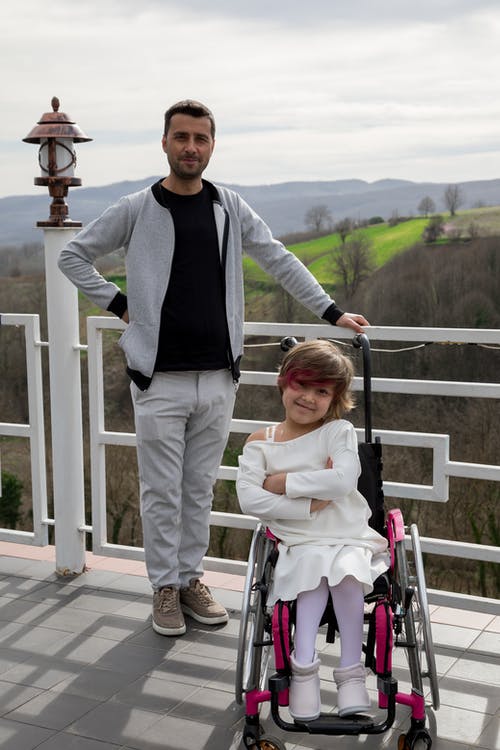
Disabilities can often prevent a person from pursuing exercise. This article will give you some suggestions for adapting exercises to your physical limitations. Yoga and chair-bound exercise are some of the exercises covered. If you are unable go outside, there are plenty of exercises you can do. This article also covers social perceptions and how they can be overcome. Continue reading! Weighing the pros and cons of different exercises, as well as how to find the most appropriate ones for your situation, this article will guide you in a path towards achieving the most benefit from your disability exercise.
Social perceptions about disabled people can limit disability exercise
The concept of disability can have many facets. There are many obstacles that disabled people have to overcome, some at the exact same time. Their impairment is often viewed as a result poor health or low quality of life. These views can lead to discrimination, prejudice, and stigma. Here are some ways that social perceptions of disability can hinder disability exercise. Learn how to overcome these barriers and increase your participation in physical activities.
In one study, participants were asked to answer questions about implicit attitudes toward disabled people. Participants were asked to rate their attitudes towards people with disabilities. Participants generally had positive attitudes toward people with disabilities who exercise and are active. Participants who were physically inactive had negative attitudes. This study shows that stigmatizing disability exercisers can hinder disability exercise.
You can adapt exercises to meet your needs
It can be difficult to stay active when you have a disability. There are many different ways to incorporate exercise into daily life, and you can adapt them to suit your needs. Adapted exercises can improve your mobility, reduce your stress, and increase muscle mass. By modifying the exercises, you can get the benefits of a fitness routine without a gym membership. You can do seated cardiovascular exercises or adapt weight and flexibility training. It’s possible to find exercises which can be done by anyone with disabilities.
First, find exercises that you can adapt to suit your disability. Your heart rate will increase if you use arms and legs. This makes it more difficult to do the exercises. You can substitute resistance bands or hand cycles for weights if you have difficulty moving your arms. For visual-impaired clients, use a hand cycle instead of a bicycle. A guide can be used to show you how balance when you can’t run. To keep the exercises safe, be flexible and take small steps at first.
Exercises for those who are confined to a chair
Chair-bound exercise has many benefits. This is especially true for people with disabilities. Sitting in a chair, one can imitate a soldier’s march using their hands and arms. However, people with limited movement should be sure to do this exercise carefully to prevent injuries. This will prevent back and leg pain and improve posture. Below are some exercises suitable for people with disabilities.
Use an exercise ball to start. Hold the ends of the exercise band in your hands and place it around your wheelchair’s spine. Place the handle in a comfortable position. Hold the position for three to five seconds and then return your hands to your body. A simple overhead press is also a great exercise for strengthening the upper body. To avoid injury, the overhead presses can be quite strenuous.
Yoga
Yoga can be an effective tool for people with mobility disabilities to improve their quality of life as well as their mental and social well being. Yoga poses can be easily modified for individuals with disabilities. Some yoga exercises can even be done in a wheelchair, such as the Sitting Mountain Series. Students can experience calm and renewed energy by using the breathing techniques of yoga. This is especially useful for people with Parkinson’s disease because it can help with the psychological effects.
Students with disabilities, such limited vision, may find it useful to have someone give instructions to them. A teacher who is blind or has low vision may benefit from giving feedback on their movements. The adaptive yoga method provides social interaction. Adaptive yoga classes can provide a strong sense of community and camaraderie for participants. Adaptive yoga classes are just as beneficial to individuals with disabilities as traditional classes.
Water t’ai Chi
A water t’ai-chi session for disabled people is similar to traditional Tai Chi, but it is done in warm water. Deep, diaphragmatic inhalations are necessary to support the repetitive movement. The warm environment promotes blood flow to the extremities and helps maintain the body’s core temperature. It can also relax muscles and reduce tension throughout the body. This gentle martial art will be appreciated by people with disabilities.
Taijiquan is a wonderful way to improve your health and treat back pain. It combines martial arts with meditation to provide a holistic approach for health. The exercise is based around the principles of Taoism. It combines these for health benefits. There are also adaptations available for people with a chronic condition or disability. These adaptations are beneficial to the body and mind. Water t’ai chi can be practiced in spas and pools.

